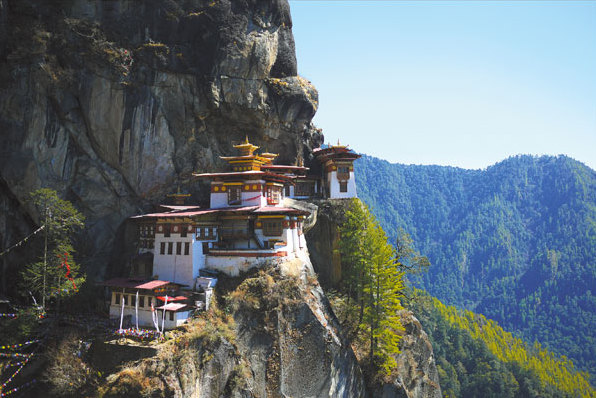
- 23 Jun, 2025

Tucked away in the eastern Himalayas, Bhutan is a hidden kingdom where ancient traditions, spirituality, and breathtaking landscapes come together. Known as "The Last Shangri-La," Bhutan offers a unique travel experience that combines cultural richness, natural beauty, and a deep sense of peace. A 10-day tour of Bhutan is not just a vacation—it's a journey into one of the world’s most mystical and mindful destinations.
Geography
Bhutan’s geography is one of dramatic contrasts. The country rises from lowland subtropical plains in the south to the towering Himalayan peaks in the north, including Gangkhar Puensum, the world’s highest unclimbed mountain. Its central region is dominated by lush valleys, rivers, and forests that support a variety of flora and fauna. Key areas on a typical 10-day tour include Paro, home to the iconic Taktsang Monastery (Tiger’s Nest); Thimphu, the capital; Punakha with its majestic dzong; and Bumthang, the spiritual heartland.
People and Climate
The Bhutanese people are known for their hospitality, humility, and strong Buddhist values. The population is mainly comprised of three ethnic groups: the Ngalops (in the west), the Sharchops (in the east), and the Lhotshampas (in the south). Bhutan is the only country that measures its success through Gross National Happiness (GNH) rather than GDP, placing high value on environmental protection, cultural preservation, and spiritual well-being.
The climate varies by altitude. Southern Bhutan is warm and humid, while central and northern Bhutan experience a temperate to alpine climate. Spring (March to May) and autumn (September to November) are ideal for travel, with clear skies, blooming landscapes, and comfortable temperatures.
Transportation
Bhutan has one international airport, located in Paro, with limited flights from cities like Bangkok, Delhi, and Kathmandu. Due to the country’s mountainous terrain, most domestic travel is by road, using private vehicles arranged by your tour operator. Though the roads are winding and sometimes narrow, they offer stunning views and access to remote valleys and monasteries. Road trips between regions, such as from Thimphu to Punakha or Bumthang, are part of the experience, adding depth and immersion to the journey.
Permits and Travel Requirements
Bhutan controls tourism to preserve its culture and environment. All international tourists (except those from India, Bangladesh, and the Maldives) must travel on a pre-arranged tour with a licensed Bhutanese tour operator. A visa is required and only issued after booking a guided tour and paying the Sustainable Development Fee (SDF) which contributes to Bhutan’s healthcare education, and environmental initiatives.
Indian, Bangladeshi, and Maldivian citizens do not require a visa but must obtain a permit usually arranged through a local travel agency. Recently an SDF also applies to regional tourists, though at a different rate.
Why Bhutan: The Last Shangri-La?
Bhutan is unlike any other destination. It’s a land where Gross National Happiness is more important than economic output, where traditional dress is worn daily, and where ancient monasteries sit perched on cliffs, seemingly untouched by time. Nature thrives, plastic is banned in many areas, and there are no traffic lights in the capital.
A 10-day tour allows you to experience this harmony firsthand—meditate in sacred temples, attend vibrant festivals, trek through Himalayan forests, and connect with monks and villagers. Each day brings new insight into a lifestyle that prioritizes mindfulness and community over materialism.
For travelers seeking authenticity, peace, and a deeper connection to the places they visit, Bhutan truly is “The Last Shangri-La.”
Nord Extreme Himalaya (P) Ltd | © 2025 All Rights Reserved | Website Designed By: Thulo Inc Powered By: Thulo Sites
Comments (0)